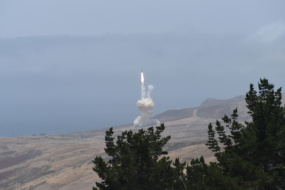America’s much-anticipated return to the Moon carries a lot more weight than just NASA’s exploration aims—for the DoD, it’s an essential opportunity to ensure the US maintains superiority and freedom in the space domain.
The Pentagon must step up its efforts to develop lunar infrastructure through partnerships with NASA and industry or risk losing the potential perch to China, according to a report released last week by the Mitchell Institute.
“The US Space Force and US Space Command must take steps today in the cislunar regime to establish the same freedom of operations it realizes in Earth orbit,” Carles Galbreath, senior fellow for space studies at the Mitchell Institute and author of the report, wrote. “Failure to act now will limit future options, create an unsustainable precedent in the cislunar environment, or even surrender US leadership in space and weaken US leadership globally.”
The findings: The DoD would need an additional $250M annually and 200 more staff to pursue the programs needed to ensure continued US lunar access, according to the report.
Those funds, the report states, would be best utilized by pursuing several initiatives:
- Developing a formal DoD cislunar strategy and doctrine
- Partnering with groups like DARPA and AFRL to fund innovative technologies to serve the DoD in cislunar space
- Expanding the space-based capabilities enjoyed on Earth—including domain awareness, communications, and navigation—to reach cislunar space
Picking sides: The report also warned of the teams forming in the push to return to the Moon. The US-led Artemis Accords have garnered a laundry list of signatories, and on the other side, China and Russia are building a team to participate in their international Lunar Research Station (ILRS) project.
“The prospects of ceding the advantage to an authoritarian and territorially minded Chinese and Russian program would create an even greater disadvantage—one increasingly difficult for the United States to overcome,” Galbreath wrote.




